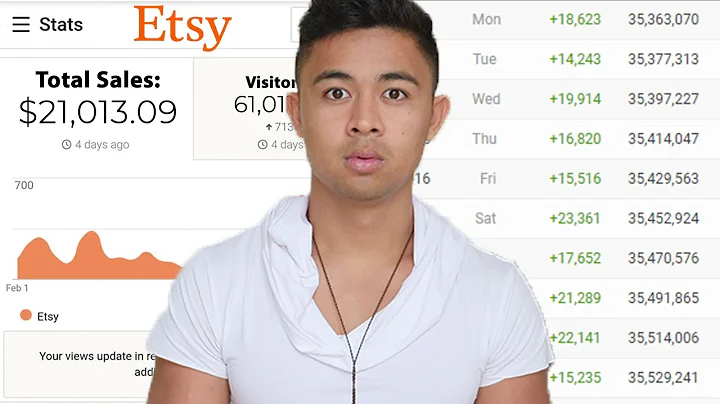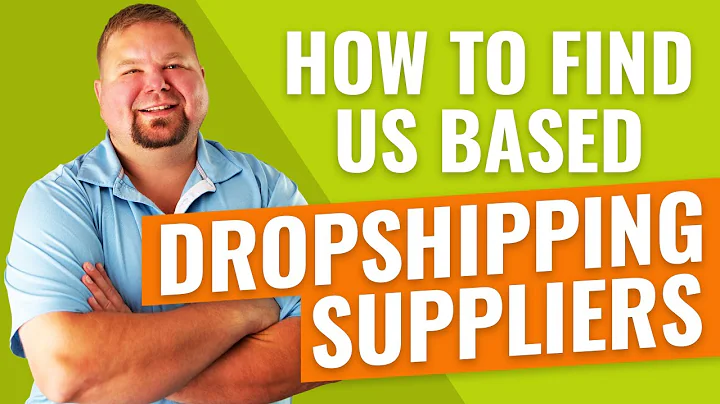Discover the Secret to Profitable Retail Products with Reverse Sourcing
Table of Contents
- Introduction
- Reverse Sourcing: An Overview
- Benefits of Reverse Sourcing
- Finding Good Retail Products
- Using Source Mogul
- Manual Sourcing Methods
- Reverse Engineering an Amazon Seller
- Why Reverse Sourcing is Important
- The Reverse Sourcing Strategy
- Starting at the Source
- Finding Retailers' Suppliers
- Setting up a dropship Relationship
- Examples of Reverse Sourcing
- Product Title Search
- Brand Search and Distributors
- Brand Search and Suppliers
- Brand Search and Wholesalers
- Understanding Wholesale Suppliers
- Vetting Suppliers
- Minimum Order Quantity
- Dropship Friendliness
- Conclusion
How to Reverse Source Your Best Retail Products
In this article, I will guide you through the process of reverse sourcing your best retail products. Reverse sourcing involves finding the wholesale supplier or distributor of a product that you have already identified as profitable through retail sales. By cutting out the middleman and going straight to the source, you not only protect your business long-term but also increase your profit margins. I will explain the step-by-step process of reverse sourcing, provide examples, and discuss the benefits and importance of this strategy.
1. Introduction
Every successful retail business relies on finding profitable products that sell well. However, as a savvy entrepreneur, you should always be thinking long-term and striving for higher profit margins. Reverse sourcing allows you to achieve both of these goals by identifying the wholesale suppliers or distributors of your best retail products.
2. Reverse Sourcing: An Overview
Reverse sourcing is a strategy that involves starting with the retail product and then working backward to find the supplier or wholesaler. Instead of traditionally beginning with a wholesale supplier and selecting products from their catalog, you begin with the product that is already proving to be profitable in the retail market. By doing so, you cut out the middleman (the retailer) and establish a direct relationship with the source.
3. Benefits of Reverse Sourcing
Reverse sourcing offers several benefits for your business. Firstly, by finding the wholesale supplier or distributor, you protect your products and business long-term. This ensures a stable supply chain and reduces the risk of product unavailability. Secondly, by bypassing the retailer, you increase your profit margins substantially. The retail markup is eliminated, allowing you to sell the product at a higher price while still remaining competitive.
4. Finding Good Retail Products
Before diving into the reverse sourcing process, it is crucial to have a selection of good retail products identified. There are two primary methods for finding these products: using Source Mogul or manual sourcing methods.
4.1 Using Source Mogul
Source Mogul is a powerful tool that aids in finding profitable retail products. It provides comprehensive search options, allowing you to filter and analyze product data to make informed decisions.
4.2 Manual Sourcing Methods
Manual sourcing involves researching and identifying products by studying other successful Amazon sellers. By reverse engineering their strategies, you can discover the suppliers they use and potentially establish a relationship with the same source.
5. Reverse Engineering an Amazon Seller
To uncover a supplier by reverse engineering an Amazon seller, you need to identify the brand of the product they are selling. Once you have the brand name, search for the brand name along with keywords like "distributor," "supplier," or "wholesaler." This can provide valuable leads in your quest to find the wholesale source for the desired product.
6. Why Reverse Sourcing is Important
Reverse sourcing is essential because it allows you to build a more sustainable and profitable business model. By establishing direct relationships with wholesale suppliers, you can secure a consistent supply of products, protect your account, and increase your profit margins. Additionally, by reversing the traditional sourcing process, you can discover unique product opportunities that are unavailable to other sellers.
7. The Reverse Sourcing Strategy
The reverse sourcing strategy involves a series of steps to identify and establish a relationship with the wholesale supplier or distributor of a retail product. Here is a breakdown of the strategy:
7.1 Starting at the Source
Begin with a retail product that you have identified as profitable. This could be a product you found using Source Mogul or through manual sourcing methods.
7.2 Finding Retailers' Suppliers
Research the brand of the product and search for distributors, suppliers, or wholesalers associated with that brand. This can be done through a simple online search using the brand name along with relevant keywords.
7.3 Setting up a Dropship Relationship
Once you have identified potential wholesale suppliers, reach out to them to inquire about dropshipping possibilities. Ensure they are dropship-friendly and willing to work with you. Clarify any requirements they may have, such as minimum order quantities or the need for an EIN (Employer Identification Number).
8. Examples of Reverse Sourcing
Here are a few examples to illustrate the reverse sourcing process:
8.1 Product Title Search
Sometimes, searching the product title along with keywords like "distributor" or "wholesaler" can yield direct results. However, this method may not always be effective, but it is worth a try.
8.2 Brand Search and Distributors
Search for the brand name along with the term "distributors" to find potential wholesale suppliers that deal with the specific brand.
8.3 Brand Search and Suppliers
Use the brand name along with the term "suppliers" to discover potential wholesale suppliers associated with the brand.
8.4 Brand Search and Wholesalers
Similarly, a search for the brand name and the term "wholesalers" can reveal relevant wholesale suppliers.
9. Understanding Wholesale Suppliers
When considering potential wholesale suppliers, there are several factors to keep in mind.
9.1 Vetting Suppliers
Before committing to a wholesale supplier, thoroughly vet them to ensure they are reliable, reputable, and a good fit for your business. Look for reviews, certifications, and contact other sellers who have worked with them to gather more information.
9.2 Minimum Order Quantity
Check if the wholesale supplier requires a minimum order quantity. This factor can significantly impact your ability to dropship certain products.
9.3 Dropship Friendliness
Confirm whether the wholesale supplier is dropship-friendly and open to establishing a dropship relationship with you. This is essential for seamless order fulfillment.
10. Conclusion
Reverse sourcing is a highly effective strategy for finding the wholesale suppliers or distributors of your best retail products. By starting with the product and working backward to the source, you can protect your business, increase profit margins, and access unique product opportunities. Implement the strategies and methods discussed in this article to build a long-term and profitable retail business.
Highlights
- Reverse sourcing allows you to identify the wholesale supplier or distributor of your best retail products.
- By cutting out the middleman and going straight to the source, you can protect your business long-term and increase profit margins.
- Source Mogul and manual sourcing methods are effective ways to find good retail products.
- Reverse engineering successful Amazon sellers can lead you to the brand and potential suppliers.
- Reverse sourcing offers multiple benefits, including stable supply chains, increased profits, and unique product opportunities.



















